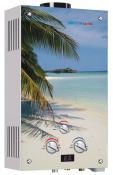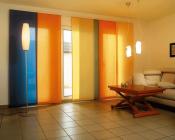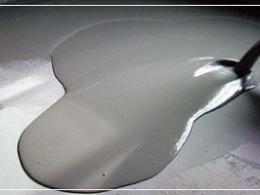Search
Login
Recommended
Bulk floor, why do we need a bulk floor, errors when working with bulk floors and how to avoid them. Which bulk floor is better - cement or gypsum
Smooth floors in the apartment is not just a fad. A smooth floor is a high-quality and beautifully laid floor covering that will last you a long time and without any unnecessary problems, neatly arranged furniture (without staggering and hanging corners and legs), the absence of steps and unplanned sills in the doorways. And how to make a flat floor quickly and easily? What type of floor screed to choose? Our article will tell you about the latest trends in floor leveling with the use of ready-made bulk floors on a cement or gypsum basis, possible errors and ways to avoid them.
Content
- What is a bulk floor and why is it needed
- Bulk floors: types
- Bulk floor plaster or cement
- Cement and gypsum bulk floor: how to make them right video
What is a bulk floor and why is it needed
Bulk floor, often it is also called industrial, although this name is currently quite relative, because it only applies to bulk floors based on epoxy resins, we will talk about bulk floors on cement and gypsum based this is a special type of seamless floor covering with ready-to-use self-leveling (self-leveling) mixtures in order to level the surface.
Self-leveling mixtures are called because having a sufficiently liquid consistency in the finished form, they are able to evenly fill in minor irregularities of the floor under the influence of gravity, along beacons and by leveling with special tools, and create a fairly even and smooth surface.
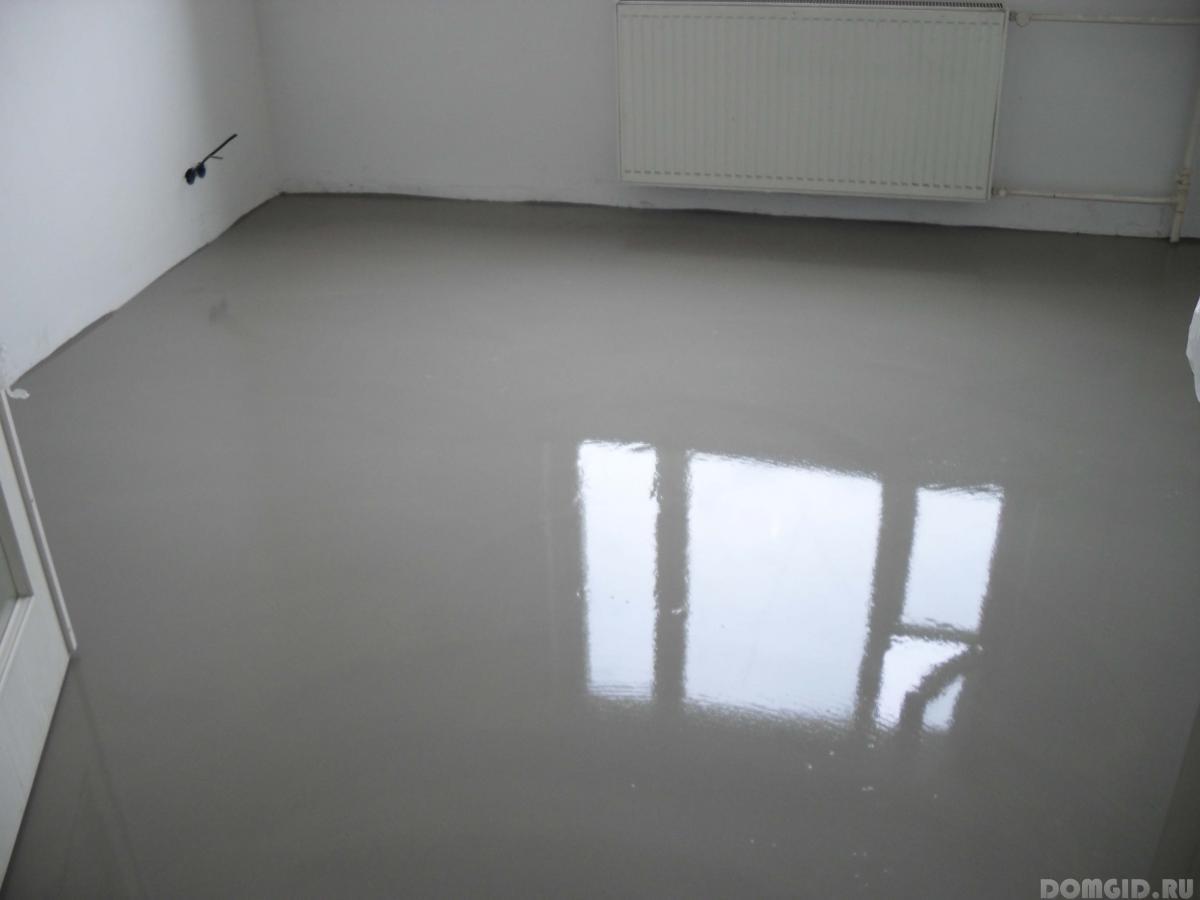
In order to most vividly demonstrate all the pros and cons of a bulk floor based on cement and gypsum, as well as the scope of its application, we compare it with a more capital analogue of a cement-sand screed for the floor:
-Layer thickness:self-leveling floors are used to level the floor, provided that the maximum thickness of the self-leveling screed does not exceed 3.5 cm, the permissible minimum layer of 3 mm will not peel off. Although technology does not stand still, and demand creates supply: some manufacturers of bulk floors have launched the production of quick-drying screeds based on cement, which can be poured with a layer of up to 4 or even 7 cm! But it is better to do this in several stages, in several, thinner layers. A cement-sand screed can be flooded once with a layer thickness of up to 10 cm.
-Preparation time: it is possible to operate the bulk floor, for example, to put the finish coating on the finished screed, after 1-3 days, which, in general, speeds up the repair. A cement-sand screed made independently or bought ready-made, poured onto the floor, dries completely and is ready to lay the finish coating only after 28 days.
- Finishing coat: self-leveling floors, and we speak of self-leveling floors on a cement and gypsum basis, imply the obligatory laying of laminate, linoleum, parquet boards, etc. on them. due to their relative high fragility and the possibility of spalling bulk floors during operation without topcoat. A cement-sand screed can be used as an independent floor covering, it is quite wear-resistant, and the basis for a finishing floor covering. When coarse-grained cement-sand screed, self-leveling floors based on gypsum or cement can act as an intermediate, preparatory layer (creates a smooth surface) under the floor finish.
-Cost:cement or gypsum-based self-leveling floors are much more expensive than the storefront version of the finished cement-sand (cement) screed. Therefore, the bulk floor consumption is slightly lower, and the cost is higher than that of mixtures for a standard, so to speak, floor screed, it is advisable to use for applying a small layer.
That is, bulk floors (cement and gypsum based) should be used, not so much for alignmenthow much to quickly smooth out minor irregularities in the floor, with subsequent laying of the finish coating in residential and office premises.
Bulk floors: types
We have already mentioned the types of bulk floors, now we’ll try to systematize the information.
There are several types of bulk floors:
-finishing These are bulk floors based on epoxy resins and epoxy enamels. The thickness of such floors can not exceed 3.5 cm., But such bulk floors themselves are durable, smooth, beautiful finish flooring.

- quick-hardening screed, which is of the following types:
- cement bulk floor it is a cement-based bulk floor with modifiers, combining sufficient strength, moisture resistance (can be used in rooms with high humidity: kitchen, bathrooms), like a cement screed, and drying speed, smoothness of the surface obtained, like polymer-based bulk floors mixtures. The price of such a bulk floor can not be called cheap, although, quite affordable.

- plaster bulk floor less moisture resistant (it is better to use it in rooms), it is recommended for floor screed with a thickness of not more than 3 cm, rather fragile, not compatible with cement-based tile adhesives, but rather cheap and quick-drying when compared with other types of bulk floors.
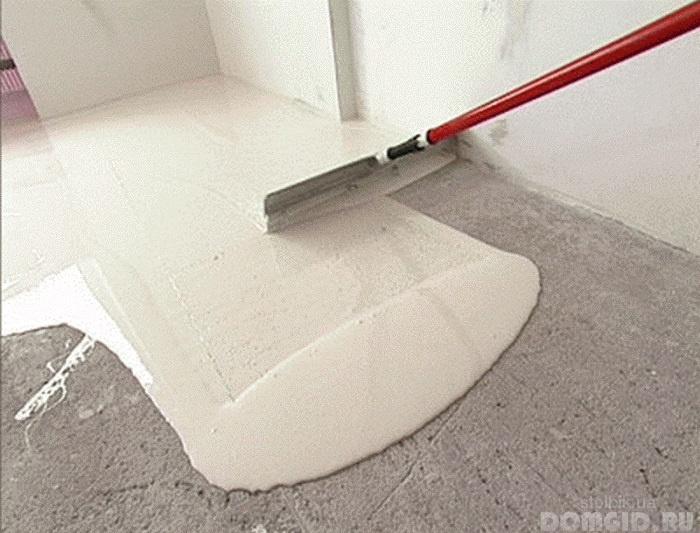
Bulk floor plaster or cement
The choice of a bulk floor: on a cement basis or gypsum, it will be very individual, although there are still general trends:
- you need cheap bulk floors only in rooms under a laminate or linoleum, we take a bulk floor on a gypsum basis.
-Need a universal bulk on the whole apartment, for all types of topcoat, you can not do without a cement-based bulk floor!
Cement and gypsum bulk floor: how to make them right
In general, the technology of bulk floors is the same for all types of quick-drying screeds.
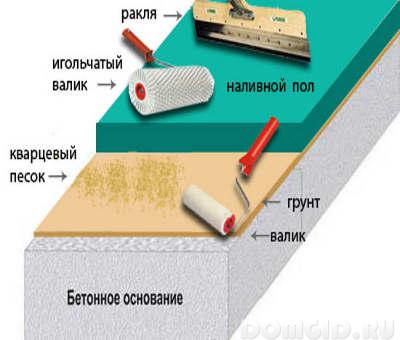
-clean the floor surface, preferably with a vacuum cleaner.
- primer it, wait for the soil to dry
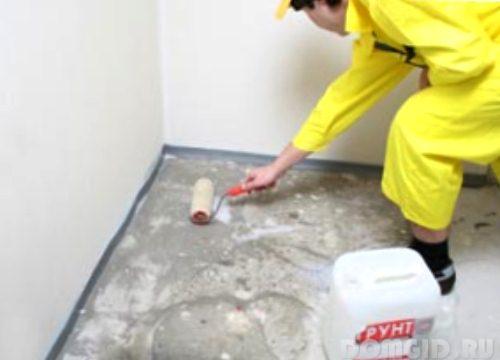
-with a layer thickness of more than 1 cm, we install a damping tape, with a thick layer of screed in the bathroom and kitchen, you can also put waterproofing.
- we install beacons, if necessary, a layer of 1 cm or more (with a minimum layer of bulk floors, the process of filling the floor is more like puttying it, therefore, beacons are not required in this case)
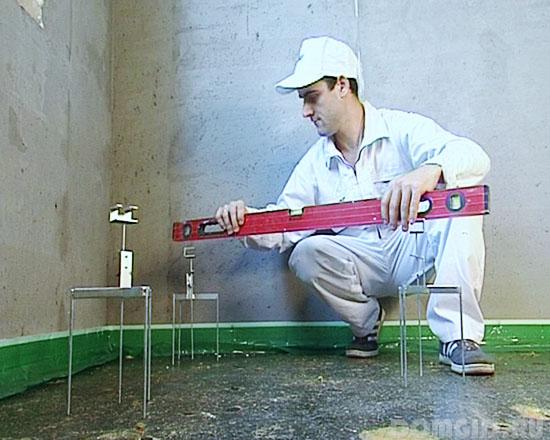
- mix the mixture according to the manufacturer’s recommendations in a bucket or automatic mechanisms, such as a concrete mixer
-fill the resulting mixture: automatically or manually.
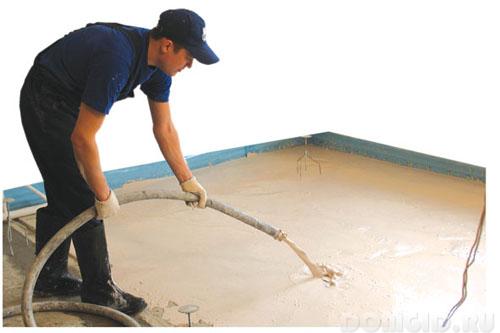
- we level with a spatula

- remove air bubbles with a needle roller or an elementary new clean brush with a stiff bristle.

We work quickly, because quick-drying mixture.
- approximately, after 8 hours we begin to grind the surface of the screed in order to create a smooth floor surface
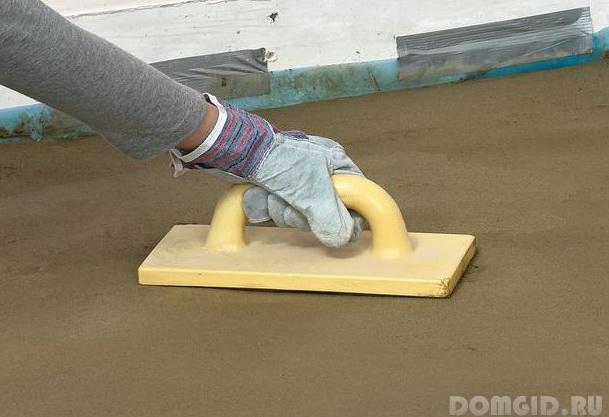
We get a practically finished surface on which you can walk, though. If possible, it is better to wait a day.
When you take into account the specifics of using a concrete floor of a particular type in specific conditions, observing the technology and choosing a high-quality mixture, you will get only high-quality: an even and durable bulk floor.
